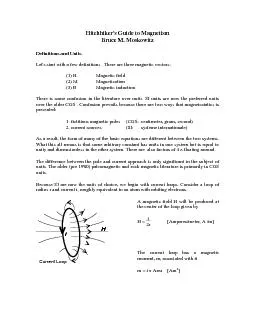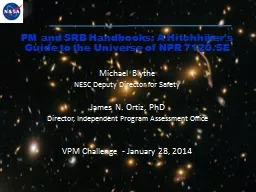PDF-Hitchhiker's Guide to MagnetismBruce M. MoskowitzDefinitions and Units
Author : stefany-barnette | Published Date : 2015-08-07
Amperesmeter A mThe current loop has a magneticmoment m associated with itm i x Area Am HHHHCurrent Loop The intensity of magnetization M or J is magnetic moment
Presentation Embed Code
Download Presentation
Download Presentation The PPT/PDF document "Hitchhiker's Guide to MagnetismBruce M. ..." is the property of its rightful owner. Permission is granted to download and print the materials on this website for personal, non-commercial use only, and to display it on your personal computer provided you do not modify the materials and that you retain all copyright notices contained in the materials. By downloading content from our website, you accept the terms of this agreement.
Hitchhiker's Guide to MagnetismBruce M. MoskowitzDefinitions and Units: Transcript
Download Rules Of Document
"Hitchhiker's Guide to MagnetismBruce M. MoskowitzDefinitions and Units"The content belongs to its owner. You may download and print it for personal use, without modification, and keep all copyright notices. By downloading, you agree to these terms.
Related Documents














![[PDF]-Hitchhiker\'s Guide für Python Best Practices für Programmierer (Animals) (German](https://thumbs.docslides.com/970127/pdf-hitchhiker-s-guide-f-r-python-best-practices-f-r-programmierer-animals-german-edition.jpg)